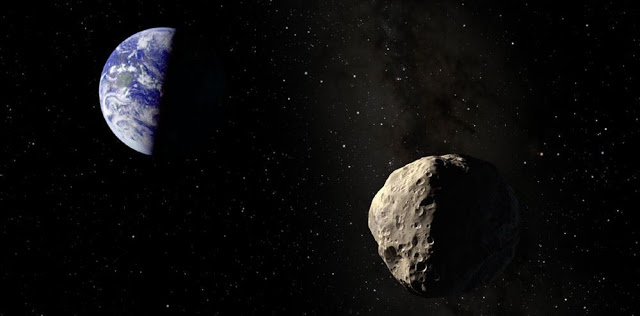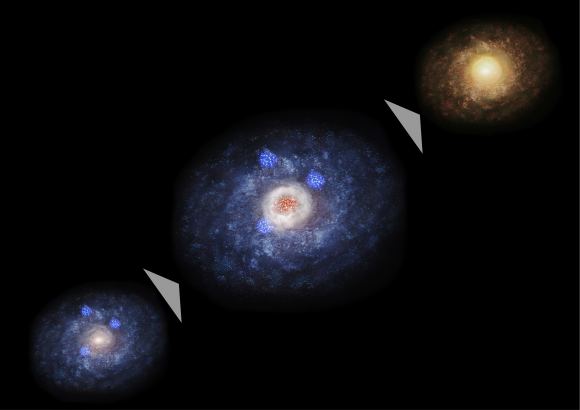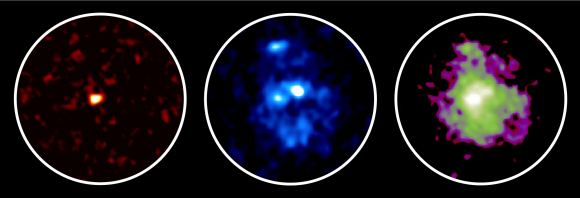For decades, as astronomers have imagined advanced extraterrestrial civilizations, they categorized such worlds by the amount of energy their inhabitants might conceivably be able to harness and use. They sorted the hypothetical worlds into three types according to a scheme named in 1964 for Soviet astronomer Nikolai Kardashev. A Type 1 civilization could manipulate all the energy resources of its home planet (a distant goal yet for Earth) and Type 2 all the energy in its star/planetary system. A super-advanced Type 3 civilization would command the energy of its whole home galaxy. The Kardashev Scale has since become a sort of gold standard for dreaming about possible civilizations beyond Earth.
Now, a team of researchers including Marina Alberti of the University of Washington has devised a new classification scheme for the evolutionary stages of worlds based on “non-equilibrium thermodynamics” — a planet’s energy flow being out of synch, as the presence of life could cause. The categories range from imagined planets with no atmosphere whatsoever to those with an “agency-dominated biosphere” or even a “technosphere,” reflecting the achievements of a vastly advanced, “energy-intensive technological species.”
Their paper, “Earth as a Hybrid Planet: The Anthropocene in an Evolutionary Astrobiological Context,” was published Sept. 6 in the journal Anthropocene. Lead author is Adam Frank, professor of physics and astronomy at the University of Rochester. Alberti is a professor of urban design and planning in the UW College of Built Environments, and director of the college’s Urban Ecology Research Lab.
The new classification system, the researchers say, is a way of thinking about sustainability on a planetary scale in what is being recognized as the Anthropocene epoch — the geological period of humanity’s significant impact on Earth and its ecosystems. Alberti contends in her research that humans and the urban areas we create are having a strong, planetwide effect on evolution.
“Our premise is that Earth’s entry into the Anthropocene represents what might, from an astrobiological perspective, be a predictable planetary transition,” they write. “We explore this problem from the perspective of our own solar system and exoplanet studies.
“In our perspective, the beginning of the Anthropocene can be seen as the onset of the hybridization of the planet — a transitional stage from one class of planetary systems to another.”
That would be, in their scheme, Earth’s possible transition from Class IV — marked by a thick biosphere and life having some effect on the planet — to the final Class V, where a planet is profoundly affected by the activity of an advanced, energy-intensive species.
The classification scheme, the researchers write, is based on “the magnitude by which different planetary processes — abiotic, biotic and technologic — generate free energy, i.e. energy that can perform work within the system.”
- Class I represents worlds with no atmosphere at all, such as the planet Mercury and the Earth’s moon.
- Class II planets have a thin atmosphere containing greenhouse gases, but no current life, such as the current states of planets Mars and Venus.
- Class III planets have perhaps a thin biosphere and some biotic activity, but much too little to “affect planetary drivers and alter the evolutionary state of the planet as a whole.” No current examples exist in the solar system, but early Earth may have represented such a world — and possibly early Mars, if life ever flickered there in the distant past.
- Class IV planets have a thick biosphere sustained by photosynthetic activity and life has begun strongly affecting the planetary energy flow.
Alberti said, “The discovery of seven new exoplanets orbiting the relatively close star TRAPPIST-1 forces us to rethink life on Earth. It opens the possibility to broaden our understanding of coupled system dynamics and lay the foundations to explore a path to long-term sustainability by entering into a cooperative ecological-evolutionary dynamic with the coupled planetary systems.”
The researchers write, “Our thesis is that the development of long-term sustainable, versions of an energy-intensive civilization must be seen on a continuum of interactions between life and its host planet.”
The classifications lay the groundwork, they say, for future research on the “co-evolution” of planets along that continuum.
“Any world hosting a long-lived energy-intensive civilization must share at least some similarities in terms of the thermodynamic properties of the planetary system,” they write. “Understanding these properties, even in the broadest outlines, can help us understand which direction we must aim our efforts in developing a sustainable human civilization.”
In other words, they added, “If one does not know where one is going, it’s hard to get there.”
Co-author on the paper is Axel Kleidon of the Max Planck Institute for Biogeochemistry in Jena, Germany.
Credit: washington.edu









